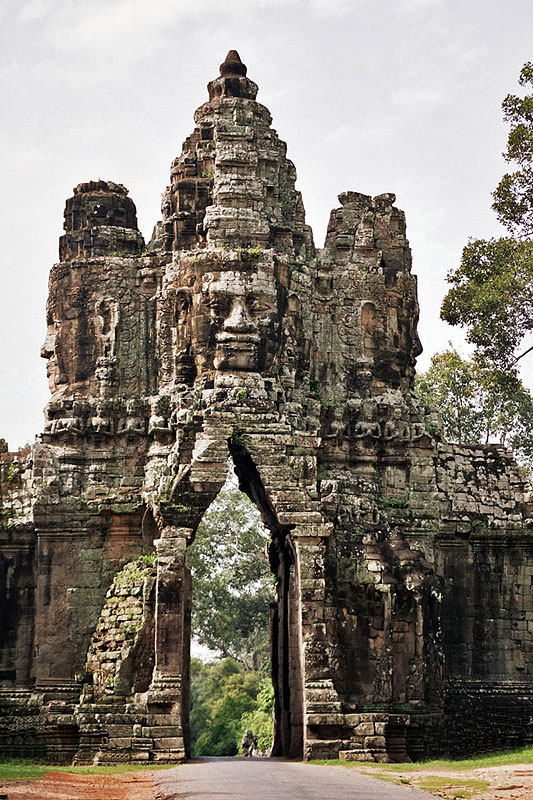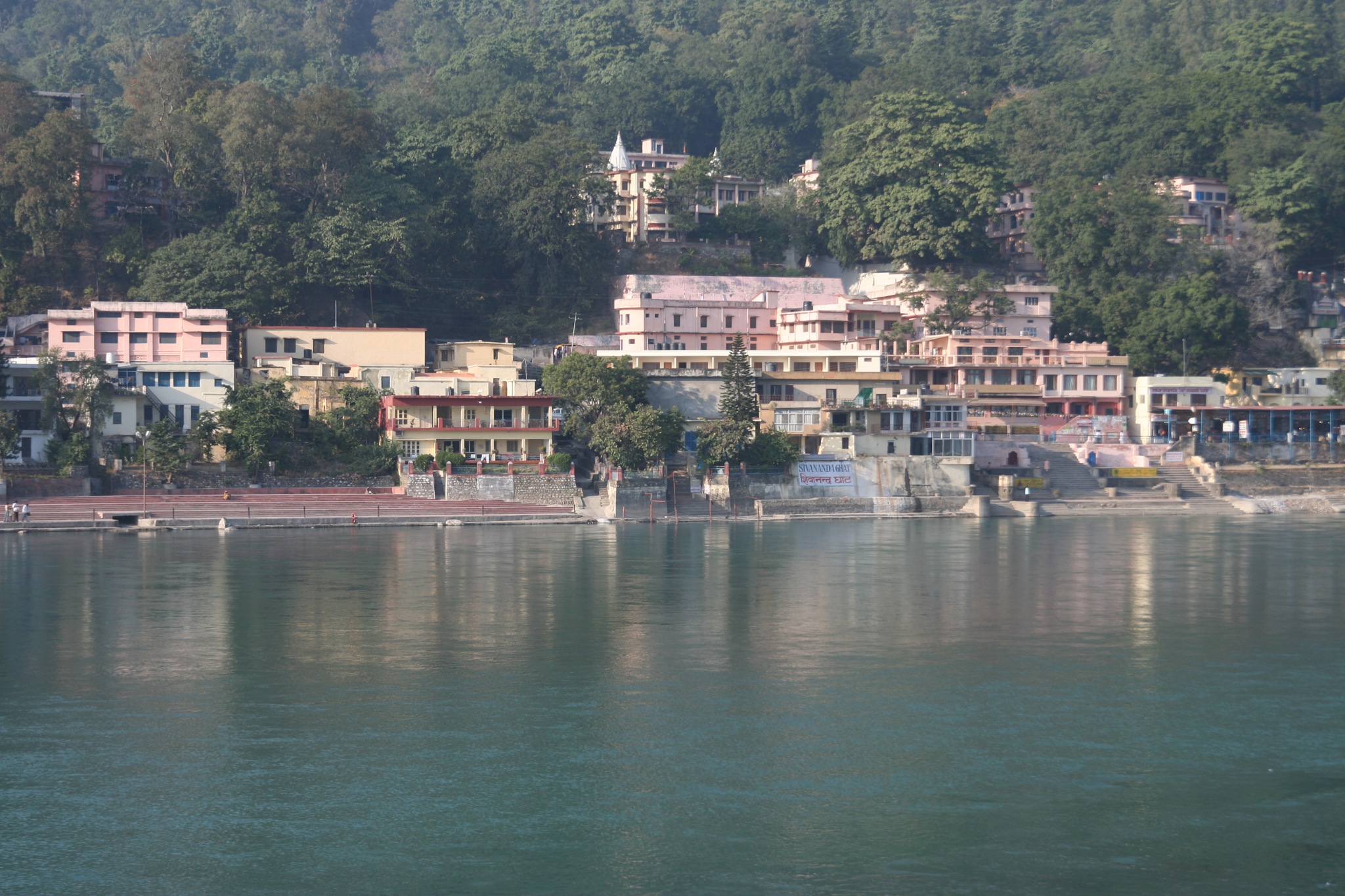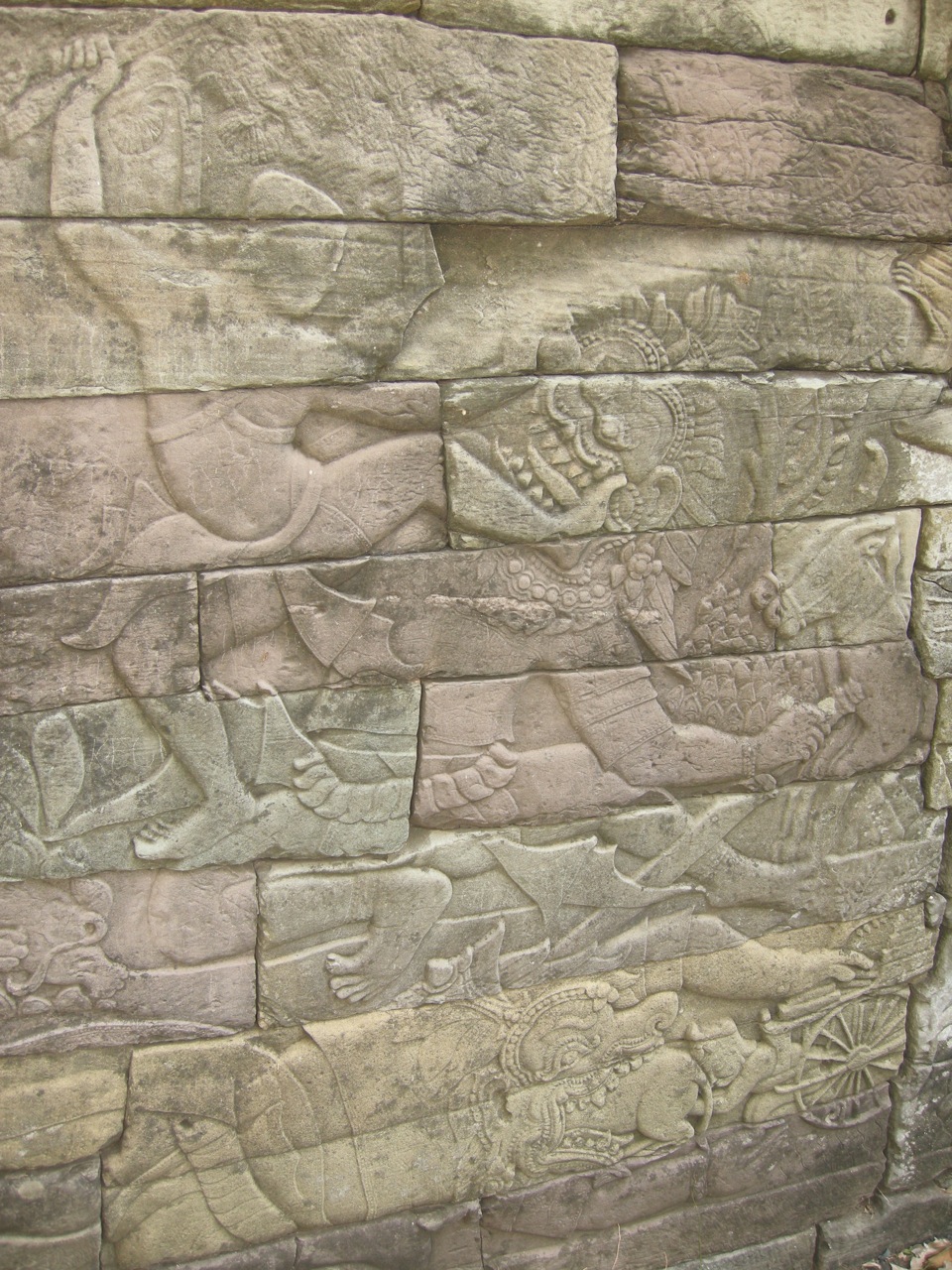|
Yasovarman I
Yasovarman I ( km, ព្រះបាទយសោវរ្ម័នទី១) was an Angkorian king who reigned in 889–910 CE. He was called " Leper King". Early years Yasovarman was a son of King Indravarman I and his wife Indradevi. Yaasovarman was said to be a wrestler. Inscriptions say he was capable of wrestling with elephants. The inscriptions also say he was capable of slaying tigers with his bare hands. His teacher was the '' purohit'' Brahman Vamasiva, part of the Devaraja cult priesthood. Vamasiva's guru, Sivasoma, was connected to the Hindu philosopher Adi Shankara. After the death of Indravarman, a succession war was fought by his two sons, Yasovarman and his brother. It is believed that the war was fought on land and on sea by the Tonlé Sap. In the end Yasovarman prevailed. Because of his father had sought to deny his accession, according to inscriptions cited by L.P. Briggs, "Yasovarman I ignored his claim to the throne through his father, Indravar ... [...More Info...] [...Related Items...] OR: [Wikipedia] [Google] [Baidu] |
Monarchy Of Cambodia
The monarchy of Cambodia is the head of state of the Kingdom of Cambodia. In the contemporary period, the King's power has been limited to that of a symbolic figurehead. The monarchy had been in existence since at least 68 AD except during its abolition from 1970 to 1993. Since 1993, the King of Cambodia has been an elected monarch, making Cambodia one of the few elective monarchies of the world. The king is elected for life by the Royal Council of the Throne, which consists of several senior political and religious figures. Candidates are chosen from among male descendants of King Ang Duong who are at least 30 years old, from the two royal houses of Cambodia (the House of Norodom and the House of Sisowath). Role Cambodia's constitution, promulgated in 1993 stipulated the king's role as a mainly ceremonial one. It declared that the king "shall reign, but not govern" as well as being the "symbol of national unity and continuity". The king performs important functions of st ... [...More Info...] [...Related Items...] OR: [Wikipedia] [Google] [Baidu] |
Angkor
Angkor ( km, អង្គរ , 'Capital city'), also known as Yasodharapura ( km, យសោធរបុរៈ; sa, यशोधरपुर),Headly, Robert K.; Chhor, Kylin; Lim, Lam Kheng; Kheang, Lim Hak; Chun, Chen. 1977. ''Cambodian-English Dictionary''. Bureau of Special Research in Modern Languages. The Catholic University of America Press. Washington, D.C. Chuon Nath Khmer Dictionary (1966, Buddhist Institute, Phnom Penh). was the capital city of the Khmer Empire. The city and empire flourished from approximately the 9th to the 15th centuries. The city houses the Angkor Wat, one of Cambodia's most popular tourist attractions. The name ''Angkor'' is derived from ''nokor'' (), a Khmer word meaning "kingdom" which in turn derived from Sanskrit ''nagara'' (), meaning "city". The Angkorian period began in AD 802, when the Khmer Hindu monarch Jayavarman II declared himself a "universal monarch" and " god-king", and lasted until the late 14th century, first falling under ... [...More Info...] [...Related Items...] OR: [Wikipedia] [Google] [Baidu] |
Temple
A temple (from the Latin ) is a building reserved for spiritual rituals and activities such as prayer and sacrifice. Religions which erect temples include Christianity (whose temples are typically called church (building), churches), Hinduism (whose temples are called Mandir), Buddhism, Sikhism (whose temples are called Gurdwara, gurudwara), Jainism (whose temples are sometimes called derasar), Islam (whose temples are called mosques), Judaism (whose temples are called synagogues), Zoroastrianism (whose temples are sometimes called Agiary), the Baha'i Faith (which are often simply referred to as Baha'i House of Worship), Taoism (which are sometimes called Daoguan), Shinto (which are sometimes called Shinto shrine, Jinja), Confucianism (which are sometimes called the Temple of Confucius), and ancient religions such as the Ancient Egyptian religion and the Ancient Greek religion. The form and function of temples are thus very variable, though they are often considered by belie ... [...More Info...] [...Related Items...] OR: [Wikipedia] [Google] [Baidu] |
Dry Lake
A dry lake bed, also known as a playa, is a basin or depression that formerly contained a standing surface water body, which disappears when evaporation processes exceeds recharge. If the floor of a dry lake is covered by deposits of alkaline compounds, it is known as an alkali flat. If covered with salt, it is known as a '' salt flat.'' Terminology If its basin is primarily salt, then a dry lake bed is called a '' salt pan'', ''pan'', or ''salt flat'' (the latter being a remnant of a salt lake). ''Hardpan'' is the dry terminus of an internally drained basin in a dry climate, a designation typically used in the Great Basin of the western United States. Another term for dry lake bed is ''playa''. The Spanish word ''playa'' () literally means "beach". Dry lakes are known by this name in some parts of Mexico and the western United States. This term is used e.g. on the Llano Estacado and other parts of the Southern High Plains and is commonly used to address paleolake sediments ... [...More Info...] [...Related Items...] OR: [Wikipedia] [Google] [Baidu] |
Lake
A lake is an area filled with water, localized in a basin, surrounded by land, and distinct from any river or other outlet that serves to feed or drain the lake. Lakes lie on land and are not part of the ocean, although, like the much larger oceans, they do form part of the Earth's water cycle. Lakes are distinct from lagoons, which are generally coastal parts of the ocean. Lakes are typically larger and deeper than ponds, which also lie on land, though there are no official or scientific definitions. Lakes can be contrasted with rivers or streams, which usually flow in a channel on land. Most lakes are fed and drained by rivers and streams. Natural lakes are generally found in mountainous areas, rift zones, and areas with ongoing glaciation. Other lakes are found in endorheic basins or along the courses of mature rivers, where a river channel has widened into a basin. Some parts of the world have many lakes formed by the chaotic drainage patterns left over from the ... [...More Info...] [...Related Items...] OR: [Wikipedia] [Google] [Baidu] |
Reservoir
A reservoir (; from French ''réservoir'' ) is an enlarged lake behind a dam. Such a dam may be either artificial, built to store fresh water or it may be a natural formation. Reservoirs can be created in a number of ways, including controlling a watercourse that drains an existing body of water, interrupting a watercourse to form an embayment within it, through excavation, or building any number of retaining walls or levees. In other contexts, "reservoirs" may refer to storage spaces for various fluids; they may hold liquids or gasses, including hydrocarbons. ''Tank reservoirs'' store these in ground-level, elevated, or buried tanks. Tank reservoirs for water are also called cisterns. Most underground reservoirs are used to store liquids, principally either water or petroleum. Types Dammed valleys Dammed reservoirs are artificial lakes created and controlled by a dam constructed across a valley, and rely on the natural topography to provide most of the basin ... [...More Info...] [...Related Items...] OR: [Wikipedia] [Google] [Baidu] |
Asceticism
Asceticism (; from the el, ἄσκησις, áskesis, exercise', 'training) is a lifestyle characterized by abstinence from sensual pleasures, often for the purpose of pursuing spiritual goals. Ascetics may withdraw from the world for their practices or continue to be part of their society, but typically adopt a frugal lifestyle, characterised by the renunciation of material possessions and physical pleasures, and also spend time fasting while concentrating on the practice of religion or reflection upon spiritual matters. Various individuals have also attempted an ascetic lifestyle to free themselves from addictions, some of them particular to modern life, such as money, alcohol, tobacco, drugs, entertainment, sex, food, etc. Asceticism has been historically observed in many religious traditions, including Buddhism, Jainism, Hinduism, Islam, Christianity, Judaism, Stoicism and Pythagoreanism and contemporary practices continue amongst some religious followers. The pra ... [...More Info...] [...Related Items...] OR: [Wikipedia] [Google] [Baidu] |
Ashram
An ashram ( sa, आश्रम, ) is a spiritual hermitage or a monastery in Indian religions. Etymology The Sanskrit noun is a thematic nominal derivative from the root 'toil' (< PIE *''ḱremh2'') with the prefix 'towards.' An ashram is a place where one strives towards a goal in a disciplined manner. Such a goal could be , spiritual, yogic or any other. Overview [...More Info...] [...Related Items...] OR: [Wikipedia] [Google] [Baidu] |
Banteay Chmar
Banteay Chhmar ( km, បន្ទាយឆ្មារ ) is a commune (khum) in Thma Puok District in Banteay Meanchey province in northwest Cambodia. It is located 63 km north of Sisophon and about 20 km east of the Thai border. The commune of Banteay Chhmar contains 14 villages. The massive temple of Banteay Chhmar, along with its satellite shrines and reservoir (''baray''), comprises one of the most important and least understood archaeological complexes from Cambodia's Angkor period. History Like Angkor Thom, the temple of Banteay Chhmar was constructed during the reign of Jayavarman VII in the late 12th or early 13th century. One of the temple's shrines once held an image of Srindrakumararajaputra (the crown prince), a son of Jayavarman VII who died before him.Higham, C., 2001, The Civilization of Angkor, London: Weidenfeld & Nicolson, The temple doors record Yasovarman I's failed invasion of Champa.Maspero, G., 2002, The Champa Kingdom, Bangkok: White Lotus C ... [...More Info...] [...Related Items...] OR: [Wikipedia] [Google] [Baidu] |
Champa
Champa ( Cham: ꨌꩌꨛꨩ; km, ចាម្ប៉ា; vi, Chiêm Thành or ) were a collection of independent Cham polities that extended across the coast of what is contemporary central and southern Vietnam from approximately the 2nd century AD until 1832, when it was annexed by the Vietnamese Empire under its emperor Minh Mạng. The kingdom was known variously as ''Nagaracampa'' ( sa, नगरचम्पः), ''Champa'' (ꨌꩌꨛꨩ) in modern Cham, and ''Châmpa'' () in the Khmer inscriptions, ''Chiêm Thành'' in Vietnamese and ''Zhànchéng'' (Mandarin: 占城) in Chinese records. The Kingdoms of Champa and the Chams contribute profound and direct impacts to the history of Vietnam, Southeast Asia, as well as their present day. Early Champa, evolved from local seafaring Austronesian Chamic Sa Huỳnh culture off the coast of modern-day Vietnam. The emergence of Champa at the late 2nd century AD shows testimony of early Southeast Asian statecrafting and ... [...More Info...] [...Related Items...] OR: [Wikipedia] [Google] [Baidu] |
Vyadhapura
Vyadhapura ( km, វ្យាធបុរៈ Sanskrit: व्याधपूर ''Vyādhapūra'') was an ancient city of the Funan civilization, likely in what is now Ba Phnum District in the province of Prey Veng, Cambodia. It was the capital of the Kingdom of Funan Funan (; km, ហ៊្វូណន, ; vi, Phù Nam, Chữ Hán: ) was the name given by Chinese cartographers, geographers and writers to an ancient Indianized state—or, rather a loose network of states ''(Mandala)''—located in mainla ... early in its history. Chinese reports indicated that it was about 193,121 km or 120 miles from the sea. References {{reflist Funan Ancient cities ... [...More Info...] [...Related Items...] OR: [Wikipedia] [Google] [Baidu] |
Chenla Kingdom
Chenla or Zhenla (; km, ចេនឡា, ; vi, Chân Lạp) is the Chinese designation for the successor polity of the kingdom of Funan preceding the Khmer Empire that existed from around the late sixth to the early ninth century in Indochina. The name was still used in the 13th century by the Chinese envoy Zhou Daguan, author of ''The Customs of Cambodia''. It appears on the Mao Kun map. However, modern historiography applies the name exclusively to the period from the late 6th to the early ninth century. This period is also known as Pre-Angkorian. It is dubious if "Chenla" ever existed as a unitary kingdom or if this is a misconception by Chinese chronists. Most modern historians assert that "Chenla" was in fact just a series of loose and temporary confederations of principalities. Etymology "Chenla" or "Zhenla" was the name given in Chinese accounts of an entity that sent tributes to Chinese emperors. The word "Chenla" or "Zhenla" and likewise ''Funan'' are unknown ... [...More Info...] [...Related Items...] OR: [Wikipedia] [Google] [Baidu] |
.jpg)
.jpg)









